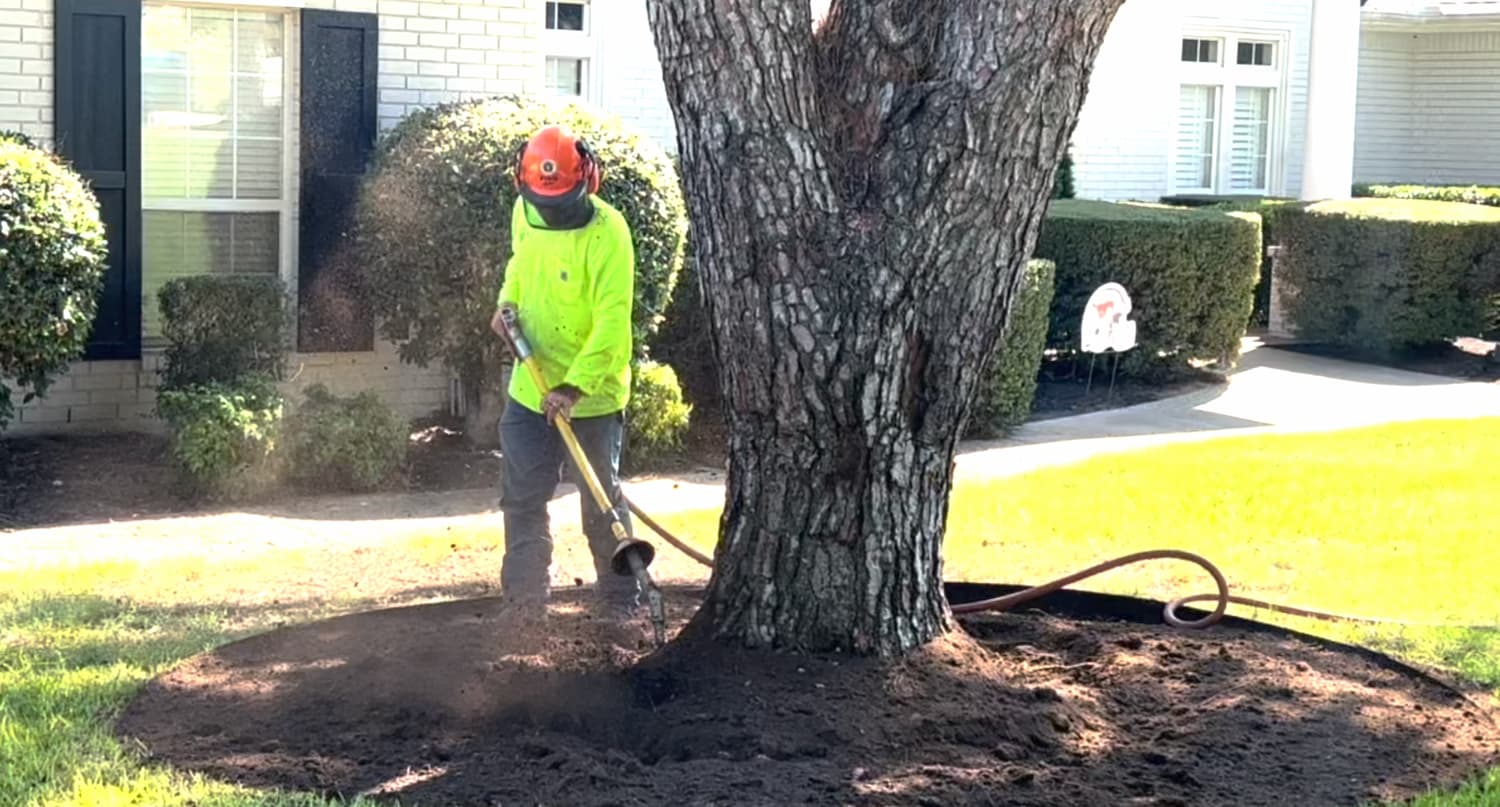Tree Communicators: The Craft and Knowledge of Tree Care

Tree species are more than just elements of our landscape; they are vital to our environment, providing shade, oxygen, and a shelter for numerous species. As communities grow and cities enlarge, caring for these magnificent giants becomes ever important. Enter the tree care specialist—professionals in arboriculture who combine creativity with scientific knowledge to maintain tree health and protection. Whether it’s through pruning, inspecting, or pathogen control, certified arborists have the knowledge and skills to enhance our relationship with trees while protecting our properties.
Hiring a certified arborist is essential for anyone looking to sustain the health of their arboreal assets. https://caspersen-pape.hubstack.net/tree-whisperers-the-art-and-science-of-tree-care bring a wealth of expertise, allowing them to assess the condition of trees, recommend maintenance strategies, and address potential hazards. Understanding the science behind tree care is important, and arborists are prepared with the latest knowledge and tools to deal with everything from pruning techniques to pest identification. In the following sections, we will explore the myriad benefits of working with tree care specialists, the most common issues they tackle, and how they contribute to sustainable tree management in our ever-changing world.
The Importance of Certified Arborists
Engaging a certified arborist is crucial for maintaining the condition and safety of trees in urban and rural environments similarly. Certified arborists possess specialized expertise and experience that enable them to evaluate tree states, identify diseases, and advise on appropriate treatment. Their credentials ensures they comprehend the complexities of tree biology, health care practices, and the proper methods for cutting and cultivating. This skill minimizes the chance of mishandling trees, which can result in harm or major property damage.
Furthermore, certified arborists are equipped to deal with tree dangers efficiently. Whether it is through tree pruning to take away dead or unhealthy branches, cabling and bracing to stabilize weak limbs, or thorough tree risk assessments, their skills guarantee that trees benefit to the surroundings without posing risks to public safety. In this effort, they play an integral role in the total management and preservation of urban green spaces.
Employing a certified arborist is also a proactive way to improve the overall health of your arboriculture. With their insights, they can guide homeowners and property stakeholders on ideal techniques for tree management, such as proper moisture control, mulching practices, and pest management. By investing in the expertise of certified arborists, you not just protect the safety of your trees but also support environmental stewardship and the beauty value of your home.
Tree Health and Risk Management
Ensuring tree health is a crucial aspect of an arborist's function, devoted to ensuring that trees prosper in their surroundings. Arborists apply their knowledge of tree biology and ecology to detect issues that may affect tree vigor. Regular inspections facilitate recognize early signs of stress, disease, or pest infestations, which can lead to greater problems if not tackled promptly. By employing proper care techniques, such as shaping, feeding, and hydration, arborists promote overall tree health and stop long-term damage.
Hazard prevention is another critical responsibility of qualified arborists. They inspect trees for structural integrity and potential risks, which is essential in urban areas where trees can impact buildings, power lines, and human safety. Arborists use a range of methods, including risk assessments and tree reports, to evaluate the likelihood of failure in branches or trunks. This preventive approach enables them to recommend remedial measures, such as cabling and bracing, or even removal in cases where safety is a concern.
In alongside individual tree care, arborists play a significant role in educating the public about the necessity of tree maintenance for hazard prevention. By increasing understanding of potential risks associated with abandoned trees, they contribute to safer communities. Arborists advocate for sustainable practices that not only protect trees but also enhance city environments, ultimately leading to better environments where trees can flourish and provide their many benefits.
Instruments and Techniques of Arboriculture
Tree care professionals use a variety of specific tools to effectively manage tree health and security. Amongst the most common instruments are power saws, that prove to be essential for cutting bigger branches and even complete trees when needed. Trimmers and long-handled clippers are necessary for finer work, allowing arborists to accurately cut minor branches and improve tree form. Additionally, climbing gear, including harnesses and ropes, is essential for getting to high branches securely, permitting arborists to conduct maintenance and assessments at varying heights.

In terms of methods, tree trimming is one of the core operations in arboriculture. Arborists use particular pruning strategies, such as crown reduction, crown lifting, and crown reduction, adapted to the tree type and the desired outcome. These techniques promote healthy growth, enhance light penetration, and minimize the risk of illness. Furthermore, tree cabling and bracing are employed for structural support in trees with fragile or broken branches, helping to prevent failure and extend the tree's lifespan.
Grasping tree science is also crucial in arboriculture. Arborists are skilled to identify different tree diseases and pests, using diagnostic tools to evaluate tree health. Methods such as soil analysis and root analysis permit arborists to create effective care plans. By combining their knowledge of trees with advanced tools and methods, arborists play a pivotal role in maintaining the well-being and beauty of both city and wild environments.
